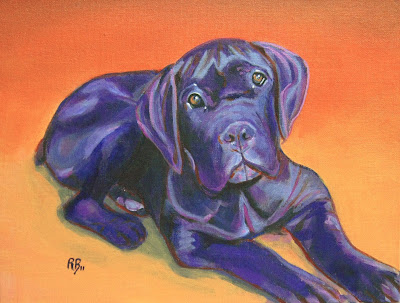Checking values in acrylic paintings
I’ve been working on a harbor painting for a while now, on and off. It started as a realistic painting, and then it turned into a more contemporary one. Kind of in the middle of that transition I decided I would portray the scene half in the sun, and half in the shade. That’s when I started having value problems.
 |
| Picture 1 with color |
Every painter knows the squinting technique to see values, but squinting has its limitations. What helps me a lot is using the “desaturation tool". Here is how it works: I take a digital photo of the artwork, I download it into my computer, and I desaturate it using Photoshop (many other image editing software can do it too). Then I really see values.
 |
| Picture 1 desaturated |
I took notes of needed corrections, and went back to the easel.
After few changes, I took another photo, and desaturated again. I’ll work more on it, but this is where I am now, you can see it below.
It does not seem like a lot of difference, but I did lighten quite a few areas.
What do you think, am I going on the right direction?
Do you know/use a different technique to check values?
It does not seem like a lot of difference, but I did lighten quite a few areas.
Do you know/use a different technique to check values?
Thanks for visiting,
Love,
Love,
Robie


.jpg)


YES! You are definitely going in the right direction!! It's great to see another artist using photoshop... I commonly print black and white reference for value checks. LOVE to see and read about your process, very glad to discover your blog!!
ReplyDeleteThanks Diane, this is most encouraging. I'm an admirer of your art, and I love to read your posts. I'll keep your advice in mind, and aim at painting miles of canvas with a black and white reference, can't wait to see what happens on the journey to find my style and broad my skills. I'm sure it will be fun! :)
ReplyDeleteThanks for sharing your process Robie! I love the composition and colours you're using ,yes there is a nice contemporary feel and yes there is an improvement.This is something I never do and should. : )
ReplyDeleteRobie, that is a great technique for checking your values. Do you have a grey scale, gradation card? I have a few and that can help so you can see just where the dark value is on that card. I think you are definitely on the right track it is really amazing how much adding the dark and lights in can make a dramatic difference with just a little tweaking. I really love this painting, the colors are great:) Can't wait to see it progress! And thanks for stopping by my blog, loved reading your comments:)
ReplyDeleteI'm so glad you guys think I'm heading on the right direction, it gave me some needed motivation! I'm happy you can see the improvement in the painting. Thanks!
ReplyDeleteCarrie: I do have a gray scale gradation card. I probably use it too sparingly, but I have to admit that it can really help checking values. I've been thinking I should use it more, I guess it's time to make thoughts into action. :)
what a great idea! i use photoshop and never thought of trying that! and most definitely yes, you are going in the right direction,it's coming along beautifully!
ReplyDeleteSuzanne, I started only recently using photoshop for desaturating, and I love how it simplifies the process of value comparison.
ReplyDeleteI really appreciate you taking the time to stop by and leave a nice comment!